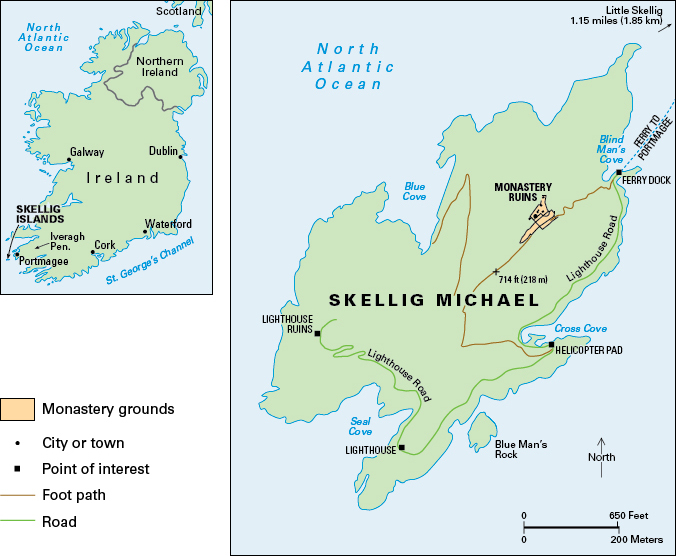Skellig Michael, also called Great Skellig, is a steep, rocky island off the southwest coast of Ireland . Its name in Irish is Sceilg Mhichíl. The remote, craggy island lies about 7 1/2 miles (12 kilometers) west of County Kerry’s Iveragh Peninsula. The island was once home to an early Christian monastery dedicated to Saint Michael . The monastery ruins are well preserved and have become a popular tourist destination.

Along with Little Skellig, Skellig Michael forms the Skellig Islands. Both islands are nature preserves that are home to tens of thousands of seabirds, including gannets, storm-petrels, and puffins. The Skellig Islands’ sea life includes dolphins, sea turtles, seals, sharks, and whales. The highest peak of Skellig Michael rises 714 feet (218 meters) above the ocean.
Saint Finnian (or Fionán) of Clonard is said to have established the island monastery in the A.D. 500’s. The monastery’s earliest records, however, date from the late 700’s. The monastic community—estimated to have supported 13 people at a time—was abandoned in the 1200’s, but the site continued as a place of pilgrimage .
The monastery ruins stand on a terraced shelf some 600 feet (183 meters) above sea level. The stone remains include a church and churchyard, crosses, “beehive” huts, boat-shaped oratories (small chapels), stairways, terraces, and walls. Skellig Michael’s monastic complex was made a UNESCO World Heritage Site in 1996. Such sites are places of unique cultural or natural importance as designated by the United Nations Educational, Scientific and Cultural Organization (UNESCO).
Two lighthouses were built on Skellig Michael in the 1800’s. One of them is still in operation. Ferries to Skellig Michael run from the village of Portmagee on Iveragh Peninsula. The Skellig Experience Visitor Centre stands on nearby Valentia Island.
